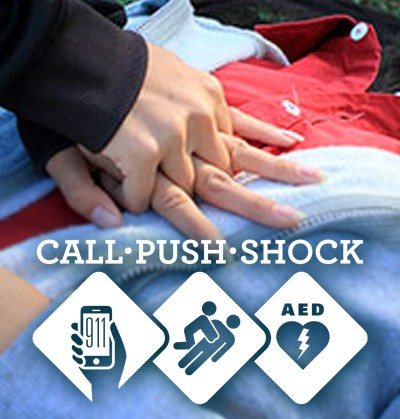
'Take Heart America' Seeks to Increase Sudden Cardiac Arrest Survival Rates
February 20, 2007 - MINNEAPOLIS - A newly formed coalition of doctors, nurses, paramedics, health educators, community leaders and others have joined together in an effort to dramatically increase the likelihood that someone who suffers sudden cardiac arrest will survive.
"Sudden cardiac arrest, sometimes known as a massive heart attack, is a top killer that can strike anyone, anywhere, without warning," said Keith Lurie, M.D., co-founder of Take Heart America. "It's estimated that 300,000 people die from it every year," he added. "That's why we're taking approaches that individually have been shown to increase a person's chances of surviving sudden cardiac arrest and combining them in the hopes of dramatically increasing the number of lives we save."
In addition to recognizing the people most at risk and training more people in CPR, Take Heart America aims to increase the number of publicly available automated external defibrillators, or AEDs, as well as training people to use them. The group has also begun working with doctors, hospital staff and paramedics on advanced resuscitation techniques, including use of special resuscitation devices and rapid cooling of people who have suffered cardiac arrest to prevent brain damage.
Currently, approximately 1 in 20 people survives sudden cardiac arrest. Take Heart America hopes to increase those odds to 1 in 3.
Three communities have signed on for Take Heart America's rollout: Austin-Travis County, Texas; Columbus, Ohio; and St. Cloud, Minn. After an evaluation period, the program aims to apply its findings on a national basis.
Take Heart America program director, Robert Niskanen, and team members, Edward Racht, MD, of Austin, Michael Sayre, MD, of Columbus, and Richard Lazar, Esq., also serve on the Board of Directors of the Sudden Cardiac Arrest (SCA) Foundation. Keith Lurie, MD, of St. Cloud, Minn., serves on the SCA Foundation’s Advisory Council.
Take Heart America is a not-for-profit organization with initial funding through grants from the Medtronic Foundation, St. Jude Medical Corporation, Advanced Circulatory Systems, Inc., and the CentraCare Health Foundation.
Cardiac Arrest Facts
Only about 5% of sudden cardiac arrest victims survive to reach a hospital. Immediately calling 9-1-1, starting CPR, using a defibrillator and delivering cutting edge in-hospital technologies can increase this figure to 25% or more. If bystander CPR is not provided, a sudden cardiac arrest victim's chances of survival fall 7 percent to 10 percent for every minute of delay until defibrillation. Resuscitation is rarely successful if CPR and defibrillation are not provided within minutes of collapse.
An estimated 75 percent of all out-of-hospital cardiac arrests happen at home. Being trained to perform CPR can mean the difference between life and death for a loved one.
Effective CPR provided immediately after cardiac arrest can double a victim's chance of survival.
Brain death begins to occur four to six minutes after someone experience cardiac arrest if no CPR and defibrillation occurs in that time
CPR helps maintain vital blood flow to the heart and brain and increases the amount of time that an electric shock from a defibrillator can be effective
Cardiac arrest is the number one killer of men and women in the United States, killing an estimated 300,000 individuals each year.
For more information, see www.takeheartamerica.org.
Intervention | Effect | Expected Survival Improvement |
Bystander CPR CPR Anytime program in schools, homes & public meeting places | Rapid EMS notification Start and maintain circulation | 2-5% |
AED Use Widespread AED public awareness, strategic deployment and rapid use | Reduce time to 1st shock in ventricular fibrillation patients Coordinate AED usage | 4-6% |
Improved CPR Quality Effective chest compressions, ventilation at 8-10 breaths/min, CPR pre/post shock | Increase circulation to heart & brain Increase oxygen & drug delivery | 4-6% |
Circulation Enhancement Basic life support and advanced life support deployment of inspiratory impedance threshold device and potentially other circulation devices | Increase circulation to heart & brain Increase oxygen & drug delivery | 4-6% |
Cooling & Hospital Care Standard hypothermia protocols, emergent angiography, and evaluation for ICD therapy | Brain preservation Heart revascularization Prevent recurrent SCA | 4-6% |
Cumulative Total of interventions listed above | 19-33% | |
